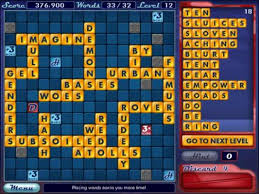Are Online Communities/Networks In Particular Instagram Creating An Unattainable Perception Of An Ideal Identity?
Scott Jake Brown.
Curtin University.
Abstract
Throughout this paper I will argue that the authenticity of youths online and offline identities are being strongly influenced by social media/social networking Instagram and Facebook will be used as examples. This paper will look at the influence social media/social networking has had and continues to have on an increasingly web-dependent society. There are a number of factors influencing this shift such as the accessibility to new methods engagement with others and interaction that might not have occurred prior to the development of online communities and social networking (Brown, 2011). This paper will use academically researched papers as well as social websites to establish some, pros and cons of social media/social networking to help develop a better understanding of identity in an online community.
Are Online Communities/Networks In Particular Instagram Creating An Unattainable Perception Of An Ideal Identity?
Introduction.
The studies that were researched for this paper discuss a vast amount of information regarding identity in youths and how they are portrayed in an online community. This paper will look into why social communities such as Instagram and Facebook remain so influential over online users and how/why they are able to contribute to the shaping of users identities. Are these social communities having such a strong impact because of the lack of direction in youths today or is it due to the strategic marketing of these sites and the influential impact they have on such a moldable society.
Some of the key topics that will be discussed throughout this paper will consist of information regarding what an online community is, how and why they are so popular and lastly why they hold so much power and influence over the shaping of online and sometimes offline identities.
“Online, users can claim to be whoever they wish. Like actors playing a role, they can deliberately choose to put forth identity cues or claims of self that can closely resemble or wildly differ from reality. With the rise of Web 2.0 and the growth of social networking sites, the virtual spaces for these portrayals of alternate identities seems near endless. But with these new sites and channels rise questions and disagreements over what constitutes public and private conversation and interaction, and the links between these manufactured and mediated identities” (Pearson, E. 2009)
Even though the quote above is long it gives good insight into why some people behave they way they do on social media, the comparison to actors playing roles and putting forward public and private roles relates so heavily to the paper and allows another perspective into why some individuals chose to behave the way they do.
Varying Interpretations of Identity
Online identities are created as to join and be part of an online community/network and are more often then not regulated, this plays a part in the authenticity of an individuals online identity as the pressures or fitting in to these online communities can play on insecurities its also worth nothing that we do have so many identities, both offline and online. What makes and Identity authentic?
Identity can be described as being more performance based, it is described in the article as having a front and back of stage referring to online and offline identities (Boyd and Heer, 2006). The reference to the “front stage” meaning having an online identity for others users to view and pass judgement on so often affected the truth and credibility behind the “front stage’ identity and opened the doors for users to elaborate and sometimes blur the lines between fact and fiction as to make themselves more appealing and fit into that particular online community. It is also suggested that the online identities of some users “ front stage” are manipulated because they know they are in the spotlight and they might enjoy creating a persona that they may not or cannot be in their “Back Stage” offline identity. This type of behaviour in online platforms is not uncommon and another article suggests that not only is online behaviour an act it has created such a false sense of self that students are struggling to determine their true identity and that in which they have developed to try and stay relevant in an online platform (Pearson, E. 2009).
The reference to “Back Stage” is a little less clear; the article refers to this being the more private side of an individual’s identity where they can be more intimate and relaxed as the “spotlight” is no longer on them (Boyd and Heer, 2006). This part of the article did not have as much supporting evidence, especially considering the rise in online dating communities and the establishment of relationships through those communities.
In another article targeted more towards teenagers it refers to a bedroom analogy (Hokinson, 2015) which discusses online platforms and compares them against personal spaces, in particular the bedroom. Something that stood out was the discussion of social media and web presences transferring over to mobile devices and referring to teenagers having to be “always on”(Hokinson, 2015). This article was referring to teenagers in particular always being able to connect with others who have access to these platforms and becoming an everyday activity. Throughout this article they suggested that not only was this creating some form of addiction at an early age it was also giving teenagers large doses of anxiety from always having to be switched on and keeping up with current posts.
This article gives good insight to several analogies regarding excessive use of social networks/platforms and the varying affects that may occur from over use.
“This article reflects on use of the teenage bedroom analogy as means to explore broader questions about the role of social network sites in young people’s lives and, in particular, the extent to which they provide environments sufficiently personal, secure and under control to enable productive forms of socialisation, performance and identity work”.(Hokinson, 2015).
Some of the contrasting arguments in this article described teenagers as having a lot more control over their social communication levels online and that it is actually quite similar to the interactive strategies a lot of teenagers use in an offline environments.(Mascheroni, Vincent and Jiminez, 2015).
The supporting evidence still does not clarify or justify a teenager knowingly creating a false or fabricated identity online in hopes of protecting their privacy, this may even contribute to the issue posed by teenagers becoming so engrossed in their online communities forgetting what is actually fact of fiction.
The importance of understanding how social platforms operate is crucial to the appreciation and understanding of this paper the arguments and topics discussed throughout. To offer a more in depth understanding listed below will be some of the main contributing factors used to operate the social platform Instagram will be listed.
Instagram is essentially a photo-sharing site, infamous for youths to use for sharing photos of themselves and for foodies to share photographs of their dinners. These are just a few example of what the site is used for, not only is it an open slather for people to voice judgement but it is almost like a guilty pleasure for people to throw abuse and have abuse thrown at them. While trends are nothing new and regardless of time and place they have been happening for centuries but nothing quite as public and self deprecating as publicising your private life to the world to only have them pass judgement. While it is hard to understand why youths are putting themselves through this torture its hard to understand any trends, past and present and why people succumb to them.
Discussion.
Due to the vast amount of information gathered and because of the diverse writers I chose to use there were some limitations and inconsistencies to the research gathered. Whilst yes their were some limiting factors I think the direction of the paper would not have gone the way it did if majority of the articles had not concentrated on similar topics.
Demographic Limitations.
The second article reviewed which was written by Mascheroni, Vincent and Jiminez, 2015) was based around teenagers that were based in 3 European countries Italy, United Kingdom and Spain. Whilst this is still very much scholarly and well researched material leaving the United States out of the picture as well as a lot of other extremely technologically advanced cultures/countries the information seemed to be lacking in a couple of areas. With the United States of American and China being 2 of the largest populations in the world the social networking patterns of these 2 countries play a massive part in the influence of other countries and even the development of a lot of these networks are created by these countries.
Conclusion and Future Studies.
The research conducted throughout this paper has covered both pros and cons of online identities and some of the precautions that should be taken when engaging in online activities on a daily basis. This paper has taken research from a broad spectrum and attempted to make sense of what identity boils down to and how the authenticity of online identities varies quite substantially not only depending on age but also consequence.
Future studies that could further benefit and educate on the topic of online identity and how transparent it should be in relation to each individual would be more studies conducted to all age demographics.
Having all articles written about young teens and adults in their early 20s narrows down a huge amount of the population that also struggle with online identity and trying to find that balance that reflect ones true self without giving too much away. It is important to remember that not only teenagers struggle with the pressures of online identity, with the world becoming more dependant on web for everything this is something that is affecting everyone and is most definitely something that should be looked at for all age brackets.
In conclusion the research gathered still leaves a lot of un answered questions but has most definitely narrowed down some tell tail signs of why young teenagers find escape in online identities as well as the fact that a lot of the time it is not necessarily false identities but sides of these young individuals that they do not feel comfortable expressing in a day to day life.
Whilst these online communities are creating a platform for this almost unattainable image of perfection they are also creating platforms for these individuals to escape and maybe discover different sides to their identity that they may not have had the opportunity to do so otherwise. There is no denying the importance of online communities/networks in current society however further research is needed to confidently say that they are the sole reason for the ideology of this unattainable identity.
References.
Boyd, D. (2007). Why Youth (Heart) Social Network Sites: The Role of Networked Publics in Teenage Social Life. In D. Buckingham (Ed.), MacArthur Foundation Series on Digital Learning Youth, Identity, and Digital Media Volume. Cambridge, MA.: MIT Press.
http://www.danah.org/papers/WhyYouthHeart.pdf
Donath, J. (1999). Identity and Deception in the Virtual Community. In P. Kollock, & M. A. Smith (Eds.), Communities in Cyberspace (pp. 29-59). New York: Routledge.
http://smg.media.mit.edu/people/Judith/Identity/IdentityDeception.html
Hodkinson, P. (2015). Bedrooms and beyond: Youth, identity and privacy on social network sites. New Media and Society. DOI: 10.1177/1461444815454
Mascheroni, G. Vincent, J. and Jiminez, E. (2015). “Girls are addicted to likes so they post semi-nakend selfies”: Peer mediation, normativity and the construction of identity online. Cyberpsychology: Journal of Psychosocial Research on Cyberspace, 9(1), DOI: 10.5817/CP2015-1-5
Pearson, E. (2009). All the World Wide Web’s a stage: The performance of identity in online social networks. First Monday. 14(3). http://firstmonday.org/htbin/cgiwrap/bin/ojs/index.php/fm/article/viewArticle/2162/2127
Turkle, S. (1997). Constructions and Reconstructions of Self in Virtual Reality. In S. Kiesler (Ed.), Culture of the Internet. Hilldale, NJ: Lawrence Erlbaum Associates.
http://www.mit.edu/~sturkle/pdfsforstwebpage/ST_Construc%20and%20reconstruc%20of%20self.pdf
Turkle, S. (1997). Multiple Subjectivity and Virtual Community at the End of the Freudian Century. Sociological Inquiry, 67(1).
http://www.mit.edu/~sturkle/pdfsforstwebpage/ST_Multiple%20Subjectivity.pdf
Van Der Nagel, E. and Frith, J. (2015). Anonymity, pseudonymity, and the agency of online identity: Examining the social practices of r/Gonewild. First Monday, 20(3), Retrieved from http://www.ojphi.org/ojs/index.php/fm/article/view/5615/4346














